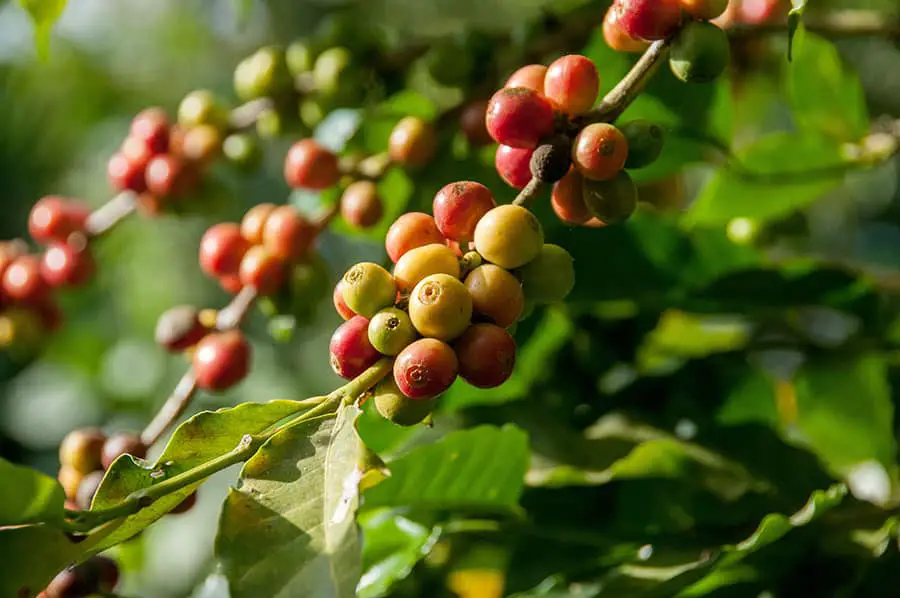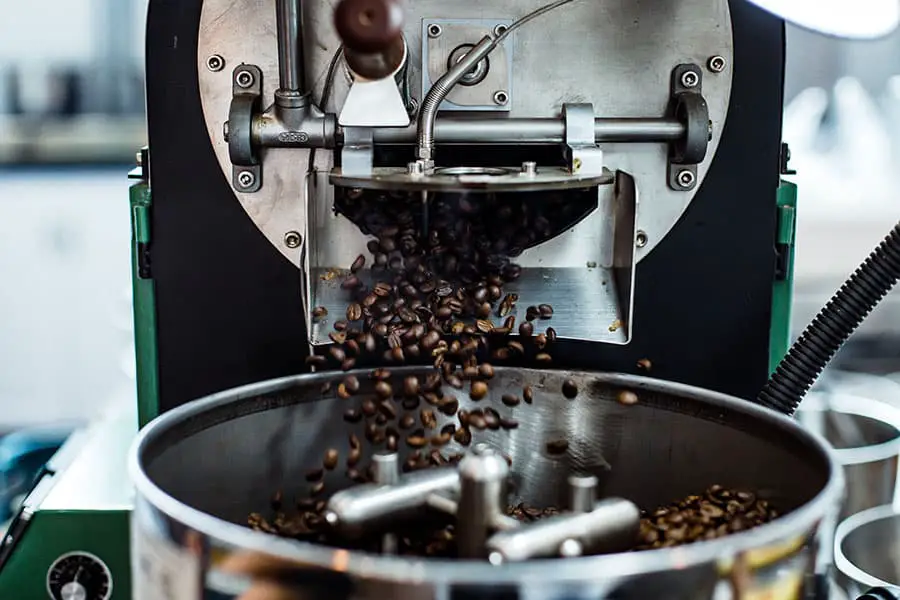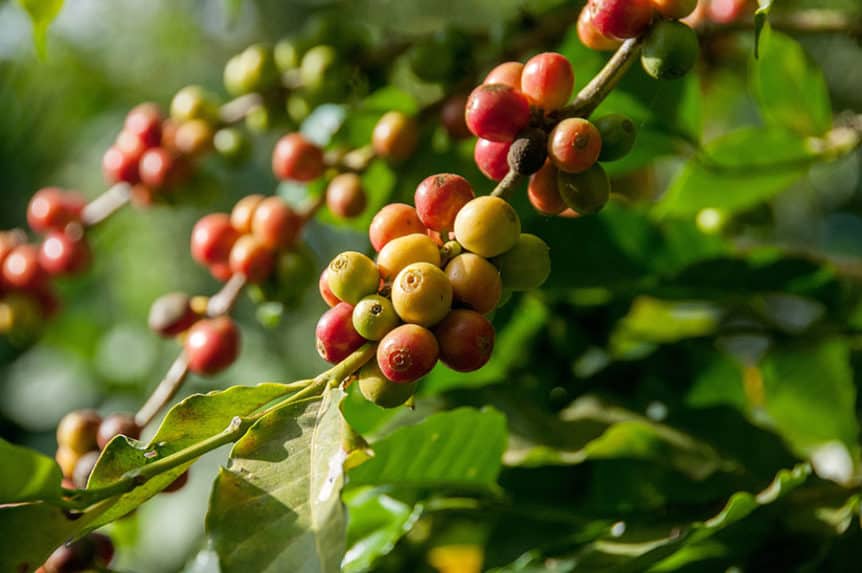
Roast levels affect coffee profoundly but in short can be described as follows:
- Light Roast – have higher acidity and can produce a grain like flavor. If roasted well they are unique with distinct flavors
- Medium Light Roast – You really get nuances, florals, fruits, brightness and clearer tastes.
- Medium – Sugars are fully caremlized and the coffee will have subtle flavors of caramel and cocoa. The color of the beans look like rich milk chocolate
- Medium Dark – Acidity begins to diminish and the carmelized sugars take on a bittersweet flavor reminiscent of dark chocolate. You will start to see small droplets of oil form on the surface of the bean.
- Dark – Will have a bold taste and the flavors become smokey and carbon like with very little acidity. The surface of the beans are covered in natural oils which give them a sheen
Keep in mind that these are only generalities as the taste is highly reliant on a roasters profile, the varieties of coffee used and how they were processed
What Coffee Roast Level Is Best?
Another way to think about the different coffee roasts is that in lighter roasts you’re going to have the roasted beans exhibiting more of their origin character, like the natural flavors created by the bean’s own variety, soil, altitude and weather.
With more roasting and as the beans darken, those origin flavors are obscured by the new roasting-induced flavors. For darker roasts, the actual roasted flavor may be so prominent that you can’t even decipher anything about the origin of the pre-roasted beans.
Medium and dark roasts have lower moisture and oil content. Some people have become accustomed to believing that darker, more bitter, roasty-flavored coffee is better for some reason, when in fact the roasting process has gotten rid of a lot a bean’s flavor profile.
When you go for something a bit lighter, you may just be surprised that it is naturally a bit sweeter and creamier just as is.
What really matter is what you like. The point here though is perhaps try something new in a roast you don’t typically consume or haven’t tried at all.
Are Coffee Roast Levels an Art or a Science
Fruity… Not a word you might think of to describe a coffee bean, but surely coffee beans are fruits that grow on a tree, much like a lemon, apple, cherry, and obviously not like a strawberry near the ground.
Coffee is more fruit-like than a strawberry in that case! The thing is, you can’t just bite into a coffee bean like you would a plum or strawberry, or simply peel and eat an orange.
With the fruit of the coffee bean, humans figured out that if you heat it up, roast it in some way, the result is a delicious beverage, eagerly anticipated and consumed daily for many of us.
And, most people have preferences about their coffee, knowing what depth of smooth or sharpness of flavor of coffee they like over another. What some people may or may not realize is that our preferences come down to the differences in the coffee roast.
What we tend to call a coffee bean is in fact the seed of a cherry-like fruit. These coffee tree fruit berries grow in clusters and turn bright red when ripe.
The skin of the coffee berries, called the exocarp, is a thick substance and tastes bitter. Underneath the exocarp is the coffee bean fruit, called the mesocarp, which has a texture like a grape and is very sweet tasting.
There is a heavy syrupy substance, called the parenchyma, which protects the beans, and the beans themselves are insulated with a thin layer called the endocarp.
This endocarp protects two, bluish-green beans, which are surrounded by another layer of shield as the beans ripen into their perfect harvestability before picking and prepping for roasting.
The coffee green beans don’t have any of the characteristics of roasted beans, and they’re sponge like and soft, and smell earthy or grassy. Before roasting, coffee beans are typically stored green to help ensure no loss quality or taste.
Once roasted, coffee beans need to be stored properly and used within a recommended amount of time to ensure quality.
Like many fruits (and vegetables), there are a variety of kinds of coffee beans and each comes with different flavor characteristics. The method used to roast a bean helps or hinders its natural palate profile.
To elicit the highest potential of a coffee bean, the roasting process and tasty — and degree of caffeinated — outcome is the culmination of science meeting art and refining for the best roast result.
Heat temperature and time heated produce chemical changes to the amino acids and sugars present in the substance being heated.
And that’s what makes the coffee bean roast something of great interest to your flavor (and perhaps known caffeine effect) preference palate as you choose what kind of coffee to consume.
Most coffee is roasted commercially on a rather grand scale, however small-scale commercial roasting has increased quite a bit lately. And, some coffee drinkers are roasting coffee at home as a hobby and to experiment with flavor profiles of different beans, and also to guarantee the freshest possible roast.
Roasting allows the flavors and aromas trapped inside harvested coffee beans to surface. Blending art and science, coffee bean roasting causes chemical reactions as they beans are brought to high temperatures and then quickly cooled to stop the roasting process.
Roasted beans have that familiar coffee smell and are crunchy to the bit, and because their moisture has been roasted out of them, they weigh less. Grinding and brewing follow. But first, what’s in a roasting and why and how do they vary?
Is Roasting Coffee to the right level easy?

Successfully roasting coffee beans is not easy. The roaster has to have the ability to read the beans and make split-second timing decisions. A perfect batch of roasted beans and a ruined batch of roasted (read burned!) beans can happen with a blink of an eye. A coffee roast continues to darken until removed from its heat source.
Coffee also becomes darker as it ages, so color alone is not reliable as a roast basis. Roasters tend to find the most success with experience using a blend of information about temperature, smell, color, and sound to gauge the roasting process.
Finally, don’t neglect the fact that using your perfectly roasted, ground beans in a clean coffee maker is essential to ensure that your roast brings to your mouth all it’s supposed to offer.

